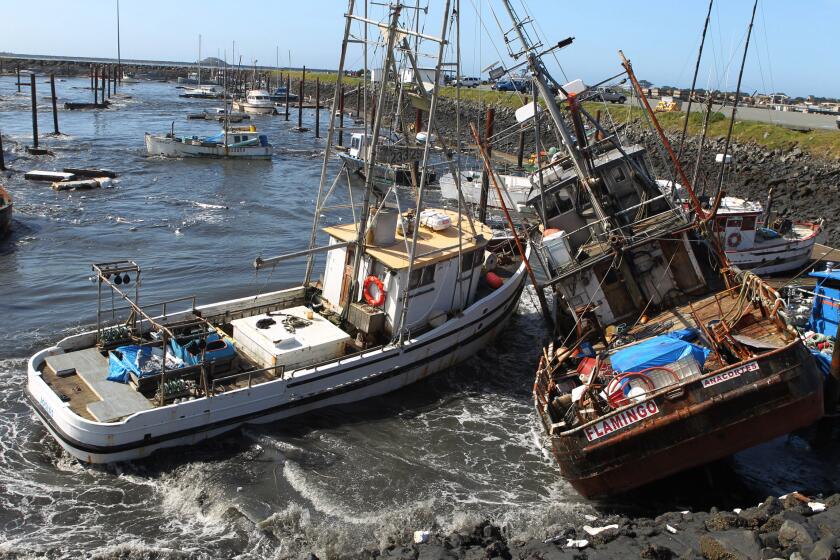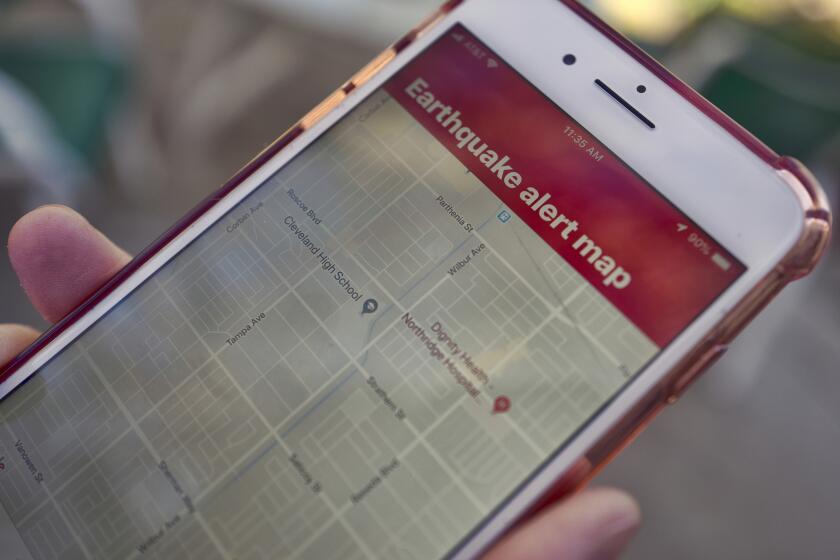Aftershock of Quake May Hit Insurers : Some Fear Coverage Demands in State May Drain Resources
- Share via
This month’s tragic twin earthquakes in Mexico apparently are escalating concern among Californians about the ability of their homes, offices and factories to withstand a similar catastrophe--one that geologists estimate is overdue.
But the biggest aftershocks of that concern may eventually come to the beleaguered property-casualty insurance industry, which after being weakened from massive losses in recent years, may not be able to accommodate an expected surge in new requests for earthquake insurance.
Some insurers say they have already stopped writing new earthquake insurance in the Los Angeles and San Francisco Bay areas because of a lack of insurance reserves.
For consumers and businesses, that already has resulted in higher premiums for some policies.
“We’re getting a lot of inquiries (from consumers about coverage) and a lot of negative responses from insurance carriers,” said Tom Garnett, director of consumer affairs for Santa Monica-based National Insurance Rating Service and Bancsure Insurance Services.
Insurance carriers are finding, he said, that their reinsurance partners are “either increasing their rates to the point that they’re astronomical or they’re getting out of the business entirely.”
The Mexican quakes have already triggered a surge of inquiries among homeowners and businesses about how much quake insurance they should have.
“We saw a significant increase in calls,” said David Hedman, executive director of EPI-Center, a Palo Alto-based engineering firm that specializes in assessing the ability of structures to withstand earthquakes. “Anytime there’s an earthquake--whether in Mexico, Coalinga or Morgan Hill--we notice a direct correlation. The calls flood in.”
EPI-Center (an acronym derived from Environmental Protection and Information Center and also a play on the earthquake term epicenter ) uses a portable computer and a formula jointly developed by its engineers and Stanford University’s Earthquake Engineering Center to rate the seismic survivability of buildings. The results range from 0 (total collapse) to 100 (complete survival). The assessment includes recommendations on how to reduce susceptibility to damage, Hedman said.
Such an analysis can indicate with some precision whether and how much earthquake insurance a home or business requires, according to Hedman.
The number of Californians who have insured their homes against earthquake damage has doubled this year--but so far that increase was inspired mostly by a new state law. The law, which took effect in January, requires all insurance carriers offering homeowners insurance to also make earthquake insurance available to their customers.
The law also requires them to notify their policyholders that this additional coverage is available--which most companies accomplished by mailing registered letters to their customers earlier this year.
As a result, about 12% of California’s homeowners now have earthquake insurance--about double the percentage at the end of last year, according to an estimate by the California Department of Insurance. However, the department noted, many may later drop the new coverage when their policies come up for renewal.
“People will buy it for a year, won’t have an earthquake and will let it lapse,” predicted Jennifer Nicholson of Western Insurance Information in Santa Ana. “So while 10% to 14% now have it, we don’t know how long that will last.”
Premiums range from about $1.50 to $3 per $1,000 of coverage, depending on the seismic risk, she said, with a deductible of 5% or 10% of the insured building’s value.
Few insurers can say yet whether the Mexican catastrophe has triggered an increase in applications for earthquake insurance beyond the influence of the state-required mass mailing to policy holders.
One that has noticed a surge is Fireman’s Fund Insurance Cos. Applications have increased since the quakes, compared to the week before them, said Kevin Howard, vice president in charge of personal-lines underwriting.
“I can’t say it’s specifically due to the Mexican quakes, but I would attribute at least part of it to the quakes,” Howard said. “Most definitely there has been increased consumer awareness and concern.”
That echoes the experience of Joe Annotti of the Independent Insurance Agents of California. “Typically after a quake,” Annotti said, “you experience a jump of 20 to 30% in applications received.”
But the significance of the Mexican earthquakes will likely be not the number of policies written, he warned, but the number of policies not written. The Independent Insurance Agents have already had to stop writing new earthquake insurance in the Los Angeles and San Francisco Bay areas because of a lack of insurance reserves to cover it, he said.
Similarly, the Western Assn. of Insurance Brokers, which had hoped to offer earthquake coverage this summer, has had to put its project on hold, Executive Director Michael S. Cabot said. “We’d like to offer it if we could find somebody who has the capacity,” he said.
This so-called capacity problem stems from the fact that companies selling policies to commercial and residential customers typically sell most of that insurance risk to reinsurance companies at home and abroad. That reinsurance market has been reeling under six years of severe losses that have now forced firms to reduce how much new risk they can take on.
“That’s where the Mexican quake is going to be felt the most,” Annotti predicted. “It may not be felt until reinsurance treaties are renewed in January or July, 1986,” he said, but insurers are going to find either sharply increased prices or, worse, no coverage at all. “If that happens, it’s going to seriously hinder companies from complying with the state law” requiring them to offer earthquake insurance to all homeowner policyholders who want it.
Commercial earthquake insurance is already in short supply, said Bob Sigel, who specializes in property insurance for the brokerage firm of Alexander & Alexander of California. “The premium is not the prime concern,” he said. “We just have got to get the coverage.” (Some companies can forgo the coverage, he explained, but others are required to carry earthquake insurance by their mortgage holders.)
For U.S. insurers, the amount of risk they can sell to reinsurers largely governs how much new business they can write in this country, Sigel said. “The availability of commercial earthquake insurance has already been shrinking, and the Mexico quakes point up again the probability of a quake of that magnitude happening here.”
The direct insurance losses from the Mexican quakes, which have been estimated so far at about $1 billion, will directly affect U.S. carriers very little, said John McCann of the Insurance Information Institute in San Francisco.
“But when a U.S. insurer seeks reinsurance six or nine months from now, that will be both more expensive and probably harder to get,” McCann said, agreeing with Annotti.
New investments have increased the capacity of domestic insurers to write new business by a record $3 billion in the last year, McCann said. But their increasing inability to spread new risk among reinsurers effectively limits their ability to provide new coverage in the property-casualty field generally, he added. Worldwide, the gap between insurance demand and insurance supply could climb as high as $60 billion by 1987, he said. California Earthquake Premiums and Losses Paid
Year Site Premiums Paid Loss 1971 San Fernando $4,618,000 $803,000 1972 8,954,000 2,076,000 1973 10,897,000 67,000 1974 12,966,000 444,000 1975 Oroville 13,842,000 nil 1976 17,130,000 78,000 1977 19,760,000 141,000 1978 Santa Barbara 23,159,000 357,000 1979 Imperial 28,968,000 629,000 1980 38,540,000 3,548,000 1981 50,208,000 464,000 1982 58,877,000 nil 1983 Coalinga 70,448,000 2,043,000 1984 Morgan Hill 79,452,000 3,951,000
Source: State Insurance Department Maximum Insured Loss for a Great Quake (8.25 Richter)
Site 1980 1981 1982 1983 1984 San Francisco 0.85 1.70 3.06 3.94 3.38* Los Angeles 1.23 2.40 4.17 5.483 4.66*
*Residential risk increased from the previous year, but this was offset by a larger decrease in commercial risks.
in millions of dollars
Source: State Insurance Department
More to Read
Sign up for Essential California
The most important California stories and recommendations in your inbox every morning.
You may occasionally receive promotional content from the Los Angeles Times.










